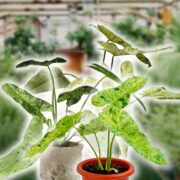We all love the soothing fragrance and beautiful purple hues of lavender plants. But did you know that you can also grow and care for these stunning plants indoors? In today’s blog post, we’ll explore the ins and outs of how to care for lavender plant indoors, ensuring they stay healthy, vibrant, and aromatic. So, grab your gardening gloves, and let’s get started!
Choosing the Right Lavender Variety for Indoors
Before you embark on your indoor lavender adventure, it’s essential to select the right variety. Some popular indoor lavender varieties include:
- Lavandula angustifolia ‘Hidcote’: Compact and slow-growing, with deep purple flowers.
- Lavandula angustifolia ‘Munstead’: A smaller variety with light purple flowers, ideal for indoor growing.
- Lavandula dentata (French Lavender): Known for its serrated leaves and long-lasting blooms, this variety adapts well to indoor conditions.
Planting and Potting Lavender
To set your lavender plant up for success, follow these planting and potting tips:
- Choose a well-draining pot with drainage holes, ideally made of clay or terracotta to help regulate moisture.
- Fill the pot with well-draining, slightly alkaline potting mix (a mix designed for cacti and succulents works well).
- Plant your lavender with its crown slightly above the soil line to prevent root rot.
Light, Temperature, and Humidity Requirements
Lavender plants thrive in specific conditions, so it’s crucial to recreate their natural environment as closely as possible:
- Light: Provide your lavender plant with at least 6-8 hours of bright, direct sunlight per day. A south-facing window is ideal, or supplement with a grow light if needed.
- Temperature: Lavender prefers cool temperatures between 60-70°F (15-21°C) during the day and 50-60°F (10-15°C) at night. Avoid placing your plant near heat vents or drafts.
- Humidity: Lavender plants prefer moderate humidity. If your indoor air is too dry, consider using a humidity tray or a small room humidifier.
Watering and Feeding Your Lavender Plant
Proper watering and feeding are crucial to keeping your lavender plant healthy and vibrant:
- Watering: Allow the top 1-2 inches of soil to dry out between waterings, and water deeply until water flows out of the drainage holes. Make sure to empty the saucer to avoid waterlogged soil.
- Feeding: Fertilize your lavender plant sparingly, using a balanced, water-soluble fertilizer at half strength, every 4-6 weeks during the growing season. Avoid over-fertilizing, as this can lead to excessive foliage growth and reduced flowering.
Pruning and Maintaining Your Indoor Lavender
Regular pruning and maintenance will help your lavender plant maintain its shape and encourage healthy growth:
- Pruning: After your lavender has finished blooming, trim back the spent flower stems and lightly shape the plant to maintain a compact, rounded form. Prune again in early spring, removing any dead or damaged growth.
- Deadheading: Remove spent blooms throughout the flowering season to encourage continuous blooming and prevent the plant from setting seed.
- Repotting: Lavender plants typically require repotting every 2-3 years. Choose a pot that is only slightly larger than the current one to avoid waterlogged soil. Gently loosen the roots and repot using fresh, well-draining potting mix.
Preventing Pests and Diseases
By keeping your lavender plant healthy and providing the right growing conditions, you can prevent most pests and diseases:
- Pests: Common indoor pests like aphids, spider mites, and whiteflies can be treated by wiping the affected leaves with a damp cloth, using insecticidal soap, or releasing beneficial insects like ladybugs.
- Diseases: Root rot and fungal diseases can be avoided by providing well-draining soil, proper watering, and adequate air circulation. If your lavender plant becomes infected, remove the affected parts and treat with a fungicide if necessary.
Enjoying the Fruits of Your Labor: Harvesting and Using Lavender
Now that you’ve cared for your indoor lavender plant, it’s time to enjoy the rewards:
- Harvesting: Pick lavender flowers just as they begin to open, ideally in the morning after the dew has dried. Cut the flower stems with a sharp pair of scissors or pruning shears.
- Drying: To dry your lavender, bundle the stems together, secure with a rubber band, and hang them upside down in a well-ventilated, dark, and dry space.
- Using Lavender: Dried lavender can be used in a variety of ways, such as making sachets, potpourris, or adding a fragrant touch to homemade soaps, candles, and bath salts. You can also use fresh or dried lavender flowers in teas, cocktails, or culinary recipes.
Conclusion
Growing and caring for lavender plants indoors can be a rewarding and fulfilling endeavor, allowing you to enjoy their beauty, fragrance, and versatility all year round. By following the tips and guidelines outlined in this blog post, you’ll be well on your way to nurturing a thriving indoor lavender plant that will not only brighten up your living space but also provide you with endless opportunities to get creative with its many uses. Happy gardening!








